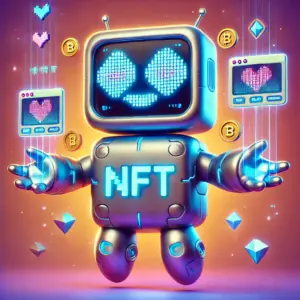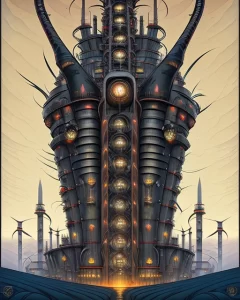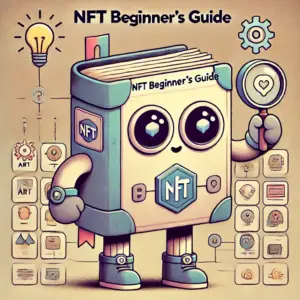The most significant cost associated with creating an NFT is the blockchain transaction fee, often referred to as gas fees. These fees are required to validate and record transactions on the blockchain, and they can vary significantly depending on the network congestion and the current value of the cryptocurrency used for the transaction.
On Ethereum, the most popular blockchain for NFTs, gas fees can range from a few dollars to several hundred dollars or more. This can make it prohibitively expensive to create NFTs on Ethereum, especially during periods of high network activity.
To mitigate these costs, some marketplaces offer “lazy minting” options, which allow you to create an NFT without paying the gas fee upfront. The gas fee is only charged when you list your NFT for sale.
Other costs associated with creating an NFT include:
- The cost of creating or acquiring the digital asset that you want to tokenize as an NFT. This could include the cost of purchasing artwork, music, or other digital items, or the cost of creating original content.
- The cost of setting up a compatible wallet to store your NFTs. There are a variety of wallets available, and some may have fees associated with creating or managing an account.
- The cost of listing your NFT on an NFT marketplace. Marketplaces typically charge a fee for each listing, and the fee structure can vary depending on the marketplace.
On average, creating an NFT can cost anywhere from a few dollars to a few hundred dollars, depending on the blockchain, the complexity of the asset, and the current market conditions.
The Cost of Buying an NFT
The cost of buying an NFT can vary significantly depending on the type of NFT, the popularity of the artist or creator, and the current market demand. Some NFTs have sold for millions of dollars, while others have sold for much less.
There is no guaranteed way to predict how much an NFT will sell for, and there is always a risk of losing money on an NFT investment.
However, there are a few things you can do to increase your chances of buying an NFT that will appreciate in value:
- Do your research and only invest in NFTs that you believe in.
- Invest in NFTs from popular artists or creators.
- Invest in NFTs in categories that are experiencing strong growth.
It is important to remember that NFTs are still a relatively new and volatile asset class, and there is no guarantee that any particular NFT will increase in value.
Demystifying NFT Costs: A Comprehensive Guide
The realm of NFTs (Non-Fungible Tokens) has ignited a surge of excitement and curiosity, captivating individuals seeking to explore the world of digital assets. Amidst this burgeoning phenomenon, one of the most common questions that arises is: how much money do you need for an NFT?
Navigating the Cost Landscape
The answer to this question is not straightforward, as the expenses associated with NFTs can vary significantly depending on several factors. Here’s a breakdown of the key components that influence the overall cost of getting involved in NFTs:
1. Creating an NFT:
The primary cost of creating an NFT stems from the blockchain transaction fee, commonly referred to as gas fees. These fees are essential for validating and recording transactions on the blockchain, and they are susceptible to fluctuations based on network congestion and the current value of the cryptocurrency utilized for the transaction.
Ethereum, the most prevalent blockchain for NFTs, experiences particularly volatile gas fees. During periods of high network activity, gas fees can skyrocket, reaching hundreds or even thousands of dollars. This can pose significant barriers for individuals seeking to create NFTs on Ethereum.
To circumvent these exorbitant costs, some marketplaces offer a “lazy minting” option. This method allows you to create an NFT without upfront gas payment; the gas fee is only charged when you list your NFT for sale.
Beyond gas fees, other expenses associated with creating an NFT include:
- The cost of acquiring or creating the digital asset to be tokenized: This could involve purchasing artwork, music, or other digital items, or developing original content.
- The cost of setting up a compatible cryptocurrency wallet: This is where you will store your NFTs and manage transactions. Different wallets have varying fees associated with account creation and maintenance.
- The listing fee for your NFT on an NFT marketplace: Marketplaces typically charge a fee for each listing, and the structure of these fees can differ across marketplaces.
2. Purchasing an NFT:
The cost of acquiring an NFT is highly variable, depending on the type of NFT, the popularity of the artist or creator, and current market demand. Some NFTs have sold for millions of dollars, while others have transacted for much lower prices.
Predicting the future value of an NFT is challenging, and there’s always a risk of losing money on an investment. However, there are strategies to increase your chances of buying an NFT with potential for appreciation:
- Thorough research and investing in NFTs you believe in: Conduct thorough research on the NFT, the artist or creator, and the project’s background and community.
- Investing in NFTs from renowned artists or creators: Renowned artists or creators often command higher prices for their NFTs due to their established reputation and fan base.
- Investing in NFTs in categories experiencing strong growth: Identify categories experiencing rapid growth and positive trends, such as gaming, collectibles, or utility-driven NFTs.
Remember, NFTs are still a relatively nascent asset class, and there’s no guarantee of consistent returns or appreciation. Conduct thorough research, understand the risks involved, and make informed decisions based on your risk tolerance and investment goals.
Conclusion
The cost of entering the NFT realm is flexible and influenced by individual objectives and circumstances. If your aspirations lie in creating NFTs, be prepared for gas fees and other associated costs. If you’re interested in purchasing NFTs, be mindful of the risks and conduct thorough research before investing.
Additional Resources:
- How to Create an NFT: https://opensea.io/learn/nft/how-to-create-an-nft
- How to Buy an NFT: https://opensea.io/learn/nft/how-to-buy-nft
- What Are NFTs?: https://www.theverge.com/22310188/nft-explainer-what-is-blockchain-crypto-art-faq






